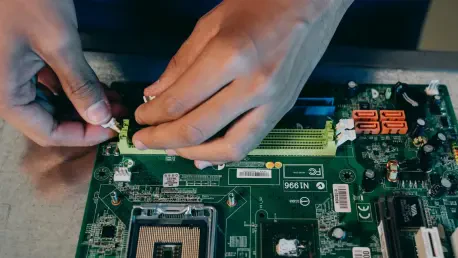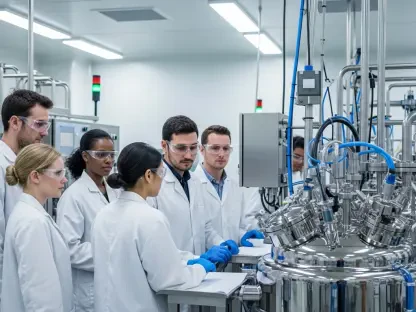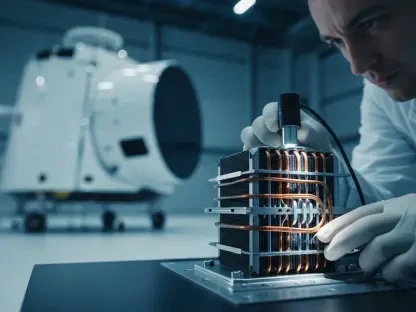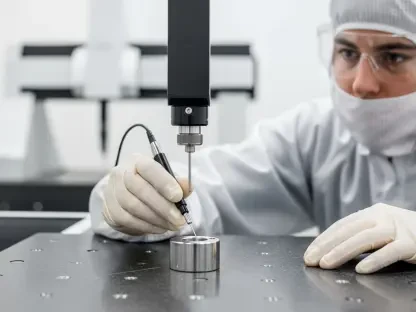In a world increasingly defined by the intricate dance of international politics and technology, the recent resumption of chip shipments by Nexperia, a Netherlands-based semiconductor manufacturer with Chinese ownership, marks a significant, albeit cautious, step forward amid ongoing geopolitical tensions. This development comes against the backdrop of a heated dispute between the Netherlands and China, which has reverberated through global supply chains, particularly impacting the automotive industry. Nexperia’s chips, vital for vehicles and electronics, became a flashpoint when the Dutch government seized control of the company over concerns tied to its parent firm, Wingtech. The resulting Chinese export controls disrupted supplies, threatening production lines worldwide. Now, with signs of de-escalation and negotiations underway, there’s a glimmer of hope for car manufacturers and suppliers. This unfolding situation underscores the fragility of tech-driven industries in the face of political tensions, setting the stage for a closer examination of its implications.
Navigating a Fragile Recovery
The path to resuming Nexperia’s chip shipments has been fraught with challenges, stemming from a broader conflict over technology transfers and national security concerns. When the Netherlands took control of the company, citing risks associated with its Chinese ownership, China retaliated with export restrictions that halted the flow of critical semiconductor components. This disruption hit the automotive sector hard, as these chips are indispensable for modern vehicles’ electronic systems. However, recent exemptions granted by China have allowed a trickle of shipments to resume, offering temporary relief to manufacturers. European nations, particularly Germany as the continent’s largest car producer, have welcomed this de-escalation, with officials expressing optimism for short-term permits to stabilize supplies. While this marks a positive turn, the recovery remains fragile, with many stakeholders wary of potential setbacks if diplomatic efforts falter. The situation highlights how deeply interconnected global markets are, where a single policy shift can send shockwaves across continents.
Beyond the immediate resumption of shipments, the ripple effects of this geopolitical standoff continue to test the resilience of automotive supply chains. Companies like Honda, a major Japanese automaker, have reported early signs of restored deliveries, with plans to restart production at plants in North America soon. Yet, executives remain cautious, noting that long-term stability is far from guaranteed. Similarly, European suppliers have scrambled to secure exemptions from export controls, with some already receiving shipments while others brace for delays. This patchwork recovery reveals the uneven impact of the dispute, as firms with stronger diplomatic or logistical leverage fare better than smaller players. The broader industry watches anxiously, aware that any interruption in semiconductor supply can cascade into production halts and financial losses. As negotiations between the Netherlands and China progress, the hope is for a more consistent framework to prevent future disruptions, though skepticism lingers about achieving lasting resolution in such a charged environment.
Industry Implications and Uncertainties
The automotive sector, already grappling with prior supply chain bottlenecks, faces heightened risks as it navigates the fallout from Nexperia’s disrupted chip deliveries. Major European carmakers, such as Volkswagen, have held steady on their production forecasts for the current year but issued warnings about potential shortages within their supplier networks. These concerns are not unfounded, as smaller suppliers face the brunt of the uncertainty, with some contemplating worker furloughs if supplies don’t stabilize. The reliance on semiconductors for everything from engine management to infotainment systems means that even a minor delay can derail entire assembly lines. This vulnerability exposes a critical flaw in global manufacturing: the concentration of key components in geopolitically sensitive regions. As exemptions provide short-term relief, the industry is forced to rethink diversification strategies, though such shifts require time and significant investment, leaving immediate solutions out of reach for many.
Looking deeper into the implications, the Nexperia situation serves as a stark reminder of the broader geopolitical currents shaping technology and trade. The cautious optimism surrounding resumed shipments is tempered by the reality that no definitive agreement has been reached between the conflicting parties. German authorities have pushed for swift permits to ensure continuity, reflecting Europe’s urgency to safeguard its automotive dominance. Meanwhile, individual companies report varying degrees of progress, with some securing critical components while others remain in limbo. This disparity underscores the complexity of resolving disputes in a highly interconnected market, where governmental policies, corporate strategies, and international diplomacy must align. The overarching trend points to a need for greater resilience in supply chains, as industries dependent on semiconductors cannot afford repeated disruptions. Until a sustainable solution emerges, the automotive sector remains on edge, balancing immediate operational needs against the specter of future political conflicts.
Path Forward for Stability
Reflecting on the strides made, the partial resumption of Nexperia’s chip deliveries stands as a testament to the power of diplomatic dialogue, even if incomplete. The exemptions granted by China, alongside ongoing talks with the Netherlands, provided a lifeline to struggling manufacturers and suppliers. Companies like Honda adapted quickly, restarting production where possible, while European firms navigated a maze of bureaucratic hurdles to secure supplies. Germany’s advocacy for rapid permits mirrored a collective sigh of relief across the continent, signaling a shared commitment to stabilizing the industry. Yet, beneath this progress lies a current of uncertainty, as the absence of a long-term accord keeps tensions simmering. The efforts to mitigate immediate shortages, though commendable, are mere stopgaps in a larger battle over technology and influence.
As the dust settles on this chapter, the focus shifts to forging a more robust framework for the future. Industry leaders and policymakers alike recognize the need for diversified supply chains to reduce dependence on any single region or entity. Exploring alternative semiconductor sources and investing in domestic production capabilities emerge as key priorities, though such transformations demand patience and resources. Collaborative international agreements also loom large as a potential shield against similar crises, urging nations to prioritize dialogue over discord. The lessons from this episode underscore that while shipments have resumed, true stability requires sustained effort and foresight. The automotive sector, having weathered this storm, now faces the task of building resilience to ensure that geopolitical tensions will not again grind production to a halt, paving the way for a more secure operational landscape in the years ahead.









